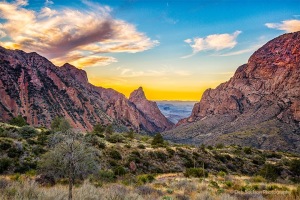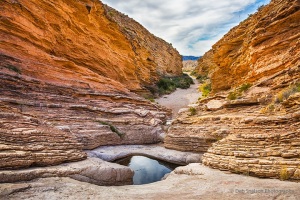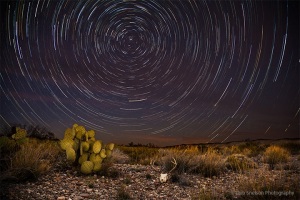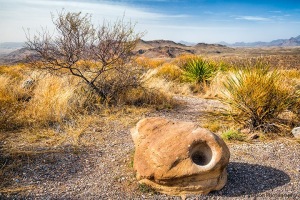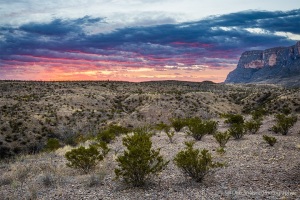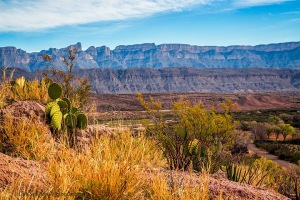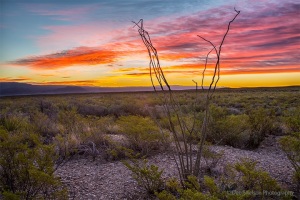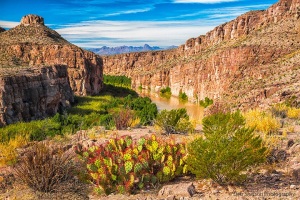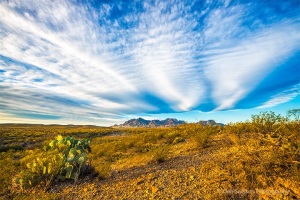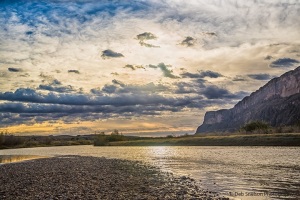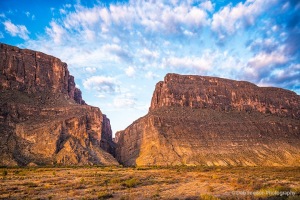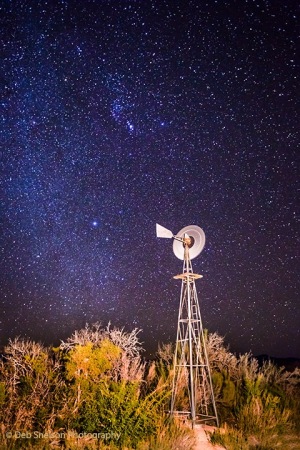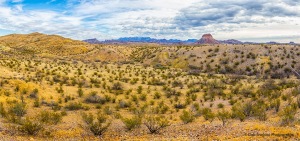Winter proved to be a great time to visit Big Bend National Park in Texas. This park includes the entire Chisos Mountain range and the largest protected area of Chihuahuan Desert topography and ecology in the United States. Because of the range in altitude from about 1,800 feet along the river to Emory Peak in the Chisos Mountains at 7,832 feet, a wide variation in available moisture and temperature exists throughout the park. During the 4 days of my visit temperatures ranged from below freezing at night, to a warm 90 degrees on Tuesday. These variations contribute to an exceptional diversity in plant and animal habitats. The park contains more than 1,200 species of plants, more than 450 species of birds, 56 species of reptiles, and 75 species of mammals. Every time I traveled from one area of the park to another I scanned for wildlife. Besides road runners, the only large creatures I spotted was a coyote.
For more than 1,000 miles the Rio Grande/Río Bravo forms the boundary between Mexico and the United States, and Big Bend National Park administers approximately 118 miles along that boundary. The park was named after a large bend in this section of the Rio Grand River. In 2012, the park was named as an international dark-sky park by the International Dark-Sky Association, which recognized the park as one of only ten places in the world certified for dark-sky stargazing. In addition, the association recognized the park as having the darkest measured skies in the lower 48 United States. Unfortunately, cloud cover prevented star photography on 3 of my 4 nights in the park, but I did get a few star trails and some night skies, and even a little light painting.

